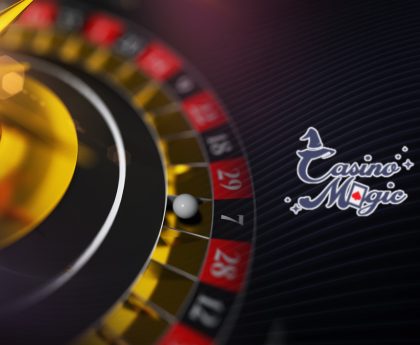Poker, or ポーカー in Japanese, is a game that has captivated people around the world for centuries. Its allure lies in the combination of skill, strategy, and chance, making it a thrilling and unpredictable game. Understanding the language of poker is crucial for anyone who wants to fully immerse themselves in the world of this popular card game. From the basic terms like “blinds” and “ante” to more advanced concepts like “pot odds” and “position,” learning the language of poker is essential for success at the tables. Whether you’re playing in a casino, at a home game with friends, or online, having a solid grasp of poker terminology can elevate your game and enhance your overall experience. This guide will help you navigate the complex and fascinating language of poker, giving you the confidence and knowledge to take your skills to the next level. So, get ready to dive into the world of poker and uncover the magic of its unique language. Get ready to master the ポーカー 語 and become a true poker aficionado.
Poker Basics: Exploring the Game
Poker is a popular card game that involves skill, strategy, and a bit of luck. Players bet on the strength of their cards and the potential of their hands, aiming to win chips or money from their opponents.
There are numerous variations of poker, each with its own set of rules and gameplay. Some well-known variations include Texas Hold’em, Omaha, Seven-Card Stud, and Razz. While the basic principles of the game remain the same, the specific rules and hand rankings can vary widely between these different kinds of poker.
One key aspect of many poker games is the use of community cards, which are shared by all players and can be used in combination with their individual hole cards to form the best possible hand. Understanding how to use these community cards effectively is essential for success in poker.
Additionally, players need to be familiar with hand rankings, which determine the strength of their hands relative to each other. From high card to royal flush, knowing the value of different hands is crucial for making informed decisions during the game.
By learning the basics of poker, including its various forms, community cards, and hand rankings, players can begin to appreciate the strategic depth and excitement of this timeless card game.
Getting to Know the Players: Skill Levels and Player Types
Player skill levels can be understood as a spectrum, ranging from amateur to astute to professional players. Amateur players are those who are new to the game or lack experience, often making mistakes and needing guidance. Astute players, on the other hand, are more seasoned and display a good understanding of the game, making strategic decisions and showing potential for growth. Professional players are at the top of the spectrum, demonstrating a high level of skill, strategic thinking, and the ability to compete at a professional level.
In terms of player types, there are three main categories: bad, cautious, and skilled players. Bad players exhibit poor decision-making, lack of understanding of the game, and often rely on luck rather than skill. Cautious players are typically risk-averse, playing it safe and avoiding challenging situations. Skilled players, on the other hand, display a strong understanding of the game, make strategic decisions, and have the ability to adapt to different scenarios effectively. They are often confident and willing to take calculated risks.
Understanding the spectrum of player skill levels and the characteristics of different player types can help in creating a more inclusive and engaging gaming environment.
The Art of Bluffing: Strategies and Techniques
In poker, a bluff is when a player makes a bet or raise with a weak hand in an attempt to deceive their opponents into thinking they have a strong hand. Bluffing is an essential component of the game and can be a powerful tool if used effectively.
A player should employ a bluff when they have read their opponents as having weak hands, or when the community cards present a favorable opportunity to represent a strong hand. It is important to consider the table dynamics and the playing style of the opponents when deciding to bluff.
One key to successful bluffing is reading betting patterns for potential bluffs from opponents. Pay attention to their betting behavior and look for inconsistencies that may indicate a bluff.
There are different types of bluffing techniques, including the semi-bluff, which involves betting with a drawing hand that has the potential to improve, the stone-cold bluff, which is a bet without any chance of winning if called, and the continuation bet, where a player continues to bet on the flop after raising pre-flop.
Recognizing signs of a bluff from opponents, such as nervous behaviors, unusual betting patterns, and past playing history, is also crucial in the art of bluffing. Learning to effectively employ and recognize bluffs is essential for any successful poker player.
Mastering Tells: Understanding Body Language and Nonverbal Cues
In poker, tells refer to the physical or behavioral cues that players exhibit, often involuntarily, that can give insight into the strength of their hand. Common physical tells to look out for include trembling hands, heavy breathing, and avoiding eye contact, all of which may indicate nervousness or bluffing. On the other hand, relaxed body language, steady breathing, and maintaining eye contact may indicate confidence and a strong hand.
In addition to physical tells, players can also interpret verbal cues and betting patterns as tells. For example, a player who suddenly becomes talkative or starts making small talk may be trying to distract opponents from their hand, while a sudden increase in bet size can signal a strong hand. Likewise, a quick call or check may indicate a weak hand, while a long pause followed by a large bet may be a sign of a strong hand.
Mastering tells in poker involves keen observation, understanding body language and nonverbal cues, and being able to accurately interpret these signals to gain an advantage at the table. However, it’s important to remember that tells are not foolproof and can vary from player to player, so it’s crucial to use them as just one tool in a larger strategy.
Playing the Odds: Calculating Probabilities
Understanding probabilities in poker is crucial for making informed decisions during the game. Basic probability concepts such as calculating outs and pot odds help players determine the likelihood of improving their hand and whether it is profitable to continue playing. This knowledge allows players to make strategic decisions based on the likelihood of winning the hand.
Advanced probability concepts such as implied odds and expected value (EV) further enhance a player’s ability to make profitable decisions. Implied odds take into account potential future bets and winnings, while EV considers the long-term profitability of a decision. By understanding these concepts, players can assess the risks and rewards of their actions more accurately.
Using probabilities to make informed decisions in poker can greatly influence a player’s success. By calculating the probabilities of certain hands and potential outcomes, players can better assess the risk and potential reward of their actions. This allows for more strategic and calculated gameplay, leading to more consistent and profitable results.
Table Etiquette: Unspoken Rules and Behaviors
Proper behavior at the poker table is essential to maintaining a respectful and enjoyable atmosphere for all players. When handling chips, it’s important to stack them neatly and not splash them around the table. When handling cards, be careful not to bend or damage them, and always keep them on the table in view of all other players. When placing bets, do so in a clear and timely manner, and avoid excessive or unnecessary movements that may distract other players.
Respecting other players and the dealer is crucial in maintaining a friendly and fair game. Avoid making rude or derogatory comments towards other players, and always treat the dealer with politeness and respect. Additionally, refrain from giving unwanted advice or criticizing other players’ decisions during the game.
Common etiquette mistakes to avoid include talking on the phone or using electronic devices excessively, as this can be distracting to others. Bluffing about your hand or celebrating a win excessively can also be seen as poor sportsmanship. Lastly, avoid stalling the game by taking an excessive amount of time to make decisions, and be mindful of the pace of the game to ensure a smooth and enjoyable experience for all players.

Conclusion
In conclusion, becoming a knowledgeable poker player involves a commitment to continual learning and improvement in poker skills. By applying terminology, strategies, and techniques learned, players can enhance their gameplay and increase their chances of success at the table. However, it is important to remember that the game of poker is not just about winning, but also about enjoying the game and respecting the rules and fellow players. By finding a balance between strategy and sportsmanship, players can elevate their skills while also contributing to a positive and enjoyable playing environment. In the end, the journey to becoming a knowledgeable poker player is not just about mastering the game, but also about embracing the culture and spirit of ポーカー 語. With a commitment to learning, respect for the game, and a passion for improvement, every poker player can develop into a formidable and respectable presence at the table.





